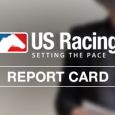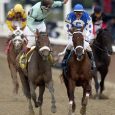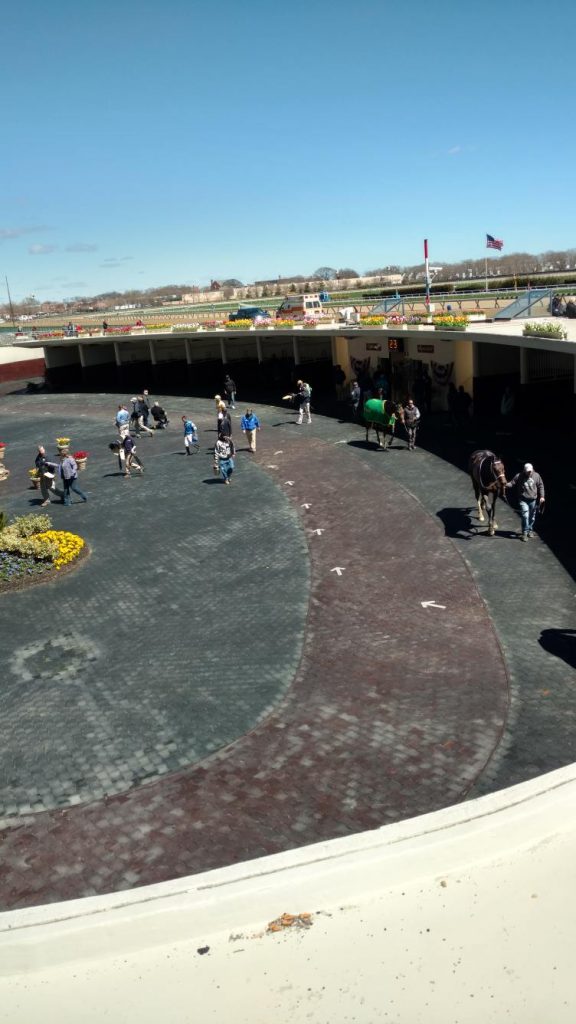
Aqueduct walking ring (photo by Nick Costa).
For many horseplayers and handicappers, winter racing means Gulfstream, Santa Anita and other warm weather locales, as the best racing of the season migrates away from cold places like Kentucky and the closed circuits in Chicago and Canada. But there’s at least one cold weather place where racing continues going strong all through the winter, and it’s a place that handicappers shouldn’t overlook — Aqueduct.
Even if you are the type of horseplayer who prefers to play the “big winter meets” at this time of year, Aqueduct offers excellent betting opportunities for winter-racing horseplayers, particularly on weekends, with big pools, big purses and good racing during the otherwise sparse months of December, January and February in the world of thoroughbred racing outside of Florida and California.
The 2018 Aqueduct winter schedule will all be run on the new, winterized main track surface. The inner track is gone (see “The Death of Aqueduct’s Inner Track”) and all those old preferences, trends and statistics relating to both the old Aqueduct inner track and the main track are irrelevant. What was the inner track is now a second turf course at Aqueduct, and while that has been used to the fullest throughout November to mid-December, turf will not be a part of winter racing at Aqueduct until the climate permits the grass courses to re-open next April.
Note that racing at Aqueduct switches to four days a week starting the second half of December through March, and that Aqueduct will not be closed for its holiday break this year, as has been the case in the recent past. Racing will continue all through the holiday season, weather permitting.
This Aqueduct main track is an entirely different surface than the previous Big A main track, so a horse’s previous career record at Aqueduct means nothing. The old horses for the course will be replaced with new ones — horses that prefer the new limestone base to the old clay base of the main track. In reality, the surface of the new Aqueduct track is a lot more like the old inner track, but with racing run on the dimensions of the 1 1/8-mile main track, which accommodates races at 6 ½ furlongs and 7 furlongs, in addition to races at six furlongs and at a mile or more.
Now that winter races at Aqueduct are being run around one turn — and no races can be carded at 1 1/16 miles or 1 mile & 70 yards — almost all Aqueduct winter route races will be one-turn miles. Since racing switched to Aqueduct at the beginning of November, there have been a grand total of — count ‘em — six two-turn dirt races run at the meet. Expect those events to remain a virtual non-factor for handicappers for the rest of the winter.
There’s obviously also no turf racing at Aqueduct over the winter. Therefore, this will be a very bettable meet where handicappers will be able to focus all their attention on Aqueduct’s track trends at the commonly-run distances of 6 furlongs, 6 ½ furlongs, one mile and, to a lesser extent, at other sprint distances of 5 ½ furlongs and 7 furlongs.
Let’s take a closer look…
Prevailing Biases: Running Styles and Post Positions
Aside from day-to-day biases that may or may not affect any racing surface, you should always be aware of the longer-term prevailing biases of any race track. If you are going to be able enjoy any kind of success betting Aqueduct, it will be worthwhile to pay attention to how the new track has been playing.
This winter season marks a huge turnaround for winter players at Aqueduct. Prior to this season, each year, New York horseplayers always had to make an adjustment in their winter handicapping to acknowledge the increased success of early speed — and particularly early speed inside — by upgrading early speed horses while slightly downgrading closers, because early speed was king on the old Aqueduct inner track.
This, however, is no longer the case. So far, less than two months into its existence, the new Aqueduct main track has played fairly to all running styles. Unlike Aqueduct winter racing of years past, speed horses appear to have no real advantage against pressers, stalkers, or closers based only in their running style. As a matter of fact, many have argued that off-the-pace runners seem to have an edge, although I think this is only a perception coming from handicappers that have been so used to speed horses winning more than their fair share at Aqueduct at this time of year.
If there is one track trend that handicappers must note on the new Aqueduct main track, it is that the rail and inside paths (1-2 posts) have definitely not been the place to be. The prevailing bias of the Aqueduct main track so far this season has definitely been against inside paths on a day-to-day basis, and you definitely should factor this into your handicapping.
Sure, there’s been a couple of track bias days so far where the rail was good, or at least ok, but, for the most part, the outside running paths have been beneficial. This is been especially true on several track bias days when the inside runners were definitely facing major disadvantages.
The slow rail on the Aqueduct main track has not really affected post position statistics to date, except that the rail (post 1) has been bad at 6 ½ furlongs and, to a lesser extent, at 6 furlongs. But the jockeys all know to stay off the inside for the most part, so other post position statistics have mostly been fair. The inside posts (1-5) have been an advantage in Aqueduct’s new turf sprints the last six weeks, but grass racing is ending and those stats are not worth paying attention to again until April.
So, for handicappers, aside from being skeptical of horses drawing post 1 at 6 ½ panels, the other major handicapping angle to look for is horses exiting sub-par efforts with inside trips in their recent past performances. Horses that lost with inside trips in their last start should be upgraded by handicappers next time out. Conversely, horses that sprang to life to roll to victory on the outside in their last race can be downgraded in subsequent starts if they draw toward the inside or are not likely to get good, outside trips.
In other words, bet horses exiting inside trips and bet against horses exiting good, outside trips last time out.
See the listing below for my track bias notes so far at the current Aqueduct meet, through racing on December 10:
Aqueduct Main Track Biases 2017-18 Meet
Dec. 10 – Horses stayed far off the slow rail on wet “good” track.
Dec. 9 – Outside preferred in snowy conditions.
Dec. 7 – Outside bias.
Dec. 6 – Helped to be outside and on or close to the pace.
Dec. 2 – Speed good, all winners on or close to the pace.
Nov. 24 – Outside preferred.
Nov. 23 – Drying track labeled “fast,” outside preferred.
Nov. 22 – Sloppy track, played fair.
Nov. 18 – Outside preferred.
Nov. 17 – Outside advantage.
Nov. 16 – Drying track labeled “fast”. Speed good and off-the-rail advantage.
Nov. 15 – Slow rail and an outside bias.
Nov. 12 – Inside preferred.
Nov. 9 – Outside advantage.
Nov. 8 – Dead rail and speed died down inside.
Aqueduct Winter Jockeys and Trainers
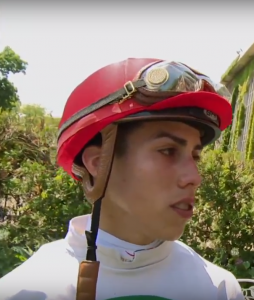
Irad Ortiz, Jr.
The top human-related story currently on the radar that is having an impact on the 2017-18 Aqueduct winter meet has to do with jockey Jose Ortiz, who will be out for approximately the next three months due to knee surgery. This is big news because Ortiz is a perennial leader in the jockey standings and could be counted on to battle it out for the meet riding title with bother Irad Ortiz. Without Jose in the picture, the jockey standing will be a one-man show — expect Irad Ortiz to be a runaway winner of the jockey title this winter at the Big A.
This dynamic is already taking shape, with Irad Ortiz out to a commanding lead in the standings with 32 wins from 124 mounts for a 26-percent win rate and a 56-percent in-the-money (ITM) rate. If anything, these numbers will only improve now that Jose Ortiz will not be riding the rest of the winter.
As you look at the Aqueduct leading riders as of Dec. 11, it is important to note that four or five of the current top 10 riders are, or will be, gone for the rest of the meet. Jose Ortiz is sidelined and John Velazquez, Joel Rosario and Javier Castellano are or will soon be off to Florida for the winter and are likely to be joined by others, including Rajiv Maragh, Luis Saez, Joe Bravo, Jose Lezcano and Paco Lopez.
This means plenty more wins to go around for Irad Ortiz, as well as the rest of the likely winter Aqueduct jockey colony. Riders fighting to get into the top five in the standings include Manny Franco (21 wins, 18-percent win rate, 41 percent ITM), Kendrick Carmouche (18 wins, 15-percent win rate, 47 percent ITM), Dylan Davis (12 wins, 9-percent win rate, 43 percent ITM), Angel Arroyo (9 wins, 13-percent win rate, 32 percent ITM) and Eric Cancel (7 Wins, 8-percent win rate, 30 percent ITM).
Make note that, just like with Irad Ortiz, percentages for all of these riders will rise dramatically the rest of the season now that Velazquez, Castellano, Rosario, Saez, etc. have all departed for Gulfstream.
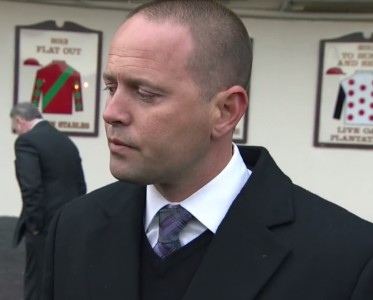
Chad Brown
Just like in the jockey standings, the complexion of the trainer standings also stands to change at this time of the year, but not as dramatically. The top New York trainers depart for Florida, but their barns still remain active at Aqueduct all through the winter for the most part, with big New York purses inducing most trainers to leave behind strings of horses in the Big Apple for the winter. For the most part these are dirt horses, claimers, and New York-breds.
Leading trainers that will remain present in the Aqueduct winter standings with effective strings of winter runners include Todd Pletcher, Linda Rice, Chad Brown, Kiaran McLaughlin, Jason Servis and Michelle Nevin. Pletcher’s and Rice’s strings, in particular, will be plentiful enough to ensure those barns stay near the top of the standings all winter long at Aqueduct.
The perennial leading winter trainer in New York is Rudy Rodriguez, and he already leads the standings with 22 wins from 77 starters for a strong 29-percent win rate and 53-percent ITM rate. Rodriguez is strong in all categories and can’t ever be ignored, despite his low average win payoff at Aqueduct, dating back to December 2016, of $6.90.
In the same sample at Aqueduct dating back to December 7, 2016, the following trainers also have low average payoffs: Rice ($7.50), Brown ($5.80), McLaughin ($8.50), Pletcher ($6.40) and, worst of all, Nevin ($4.90).
You will win a lot of races betting these trainers’ horses, but you can’t make a bunch of money doing it. So, then, who can you bet on in order to try to make some money this winter at Aqueduct?
Some of the standouts that are ready to take flight in the trainer standings this season at Aqueduct include Chris Englehart (5 wins at the current meet, average win payoff since 2016, $12.60), Jeremiah Englehart (6 wins, $12.90), Gary Gullo (7 wins, $15.80) and John Toscano (5 wins, $15.20).
Other trainers ready to heat up are David Jacobson (8-for-48, 16 percent) who should be bet with recent claims and dropdowns, and Charlton Baker (5-for-31, 16 percent), who wins with New York-breds and off of all kinds of layoffs with fresh horses.
Wrap-Up
Good luck during the Aqueduct winter meet and enjoy the upcoming season of racing in New York. Remember, just because many of the top horses and horsemen will be spending their winters out of town, doesn’t mean there aren’t still good bets to be cashed in New York at this time of year. I hope you can make this winter a winning one at the Big A.
Enjoy!


